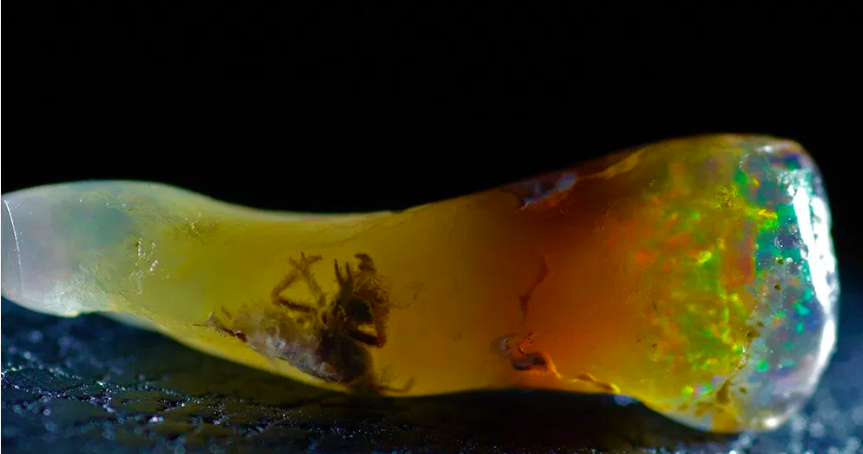This Ancient Insect Is Preserved Inside an Iridescent Opal
There's nothing quite like the eerie sight of an insect preserved in amber. Now, a serendipitous discovery has revealed that insects can also find themselves trapped in opals.
In a blog post for Entomology Today, a news website run by the Entomological Society of America, gemologist Brian Berger shared pictures of an opal he bought during a trip to the Indonesian island of Java. Inside the iridescent crystal, Berger found the silhouette of an insect frozen in a dramatic pose, with its forelimbs outstretched and its jaws wide open.
 Another angle of the opal. Image: Brian Berger, Instagram @velvetboxsociety, Email: fppmdiamonds@gmail.com
Another angle of the opal. Image: Brian Berger, Instagram @velvetboxsociety, Email: fppmdiamonds@gmail.comThe specimen was examined by the Gemological Institute of America, a nonprofit research institute, which authenticated it as a real opal with a fossil inclusion.
So how did a bug get into this gem? It may have started with exactly the same process that traps unlucky insects in amber, according to Berger.
Some trees exude a sticky sap that can immobilize bugs, leaves, seeds, and other ancient life forms. If these ensnared creatures are buried in the right sedimentary conditions, the sap transforms into a soft material called copal. Over millions of years of underground heat and pressure, copal polymerizes into hardened amber. After this amber sample preserved the insect, Berger suggests that it became "opalized."
Read More:Check Out These Weird-Ass Ancient Proto-Spiders Trapped in Amber
Opalization occurs when dissolved silicates are swept into cracks and cavities by water or other ground liquids, where they harden into opals. Indonesian opals are normally created by volcanic processes, according to ScienceAlert, so the amber may have become opalized in the presence of hot siliceous fluids.
Berger emphasizes that this is just one possible theory, and he's hoping to collaborate with other experts to help figure out the age, origins, and evolution of this rare opalized glimpse into the past.
Get six of our favorite Motherboard stories every dayby signing up for our newsletter.